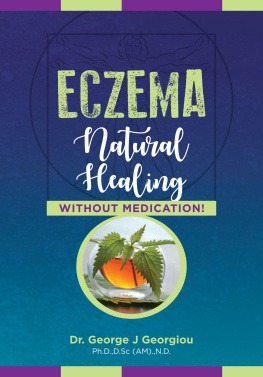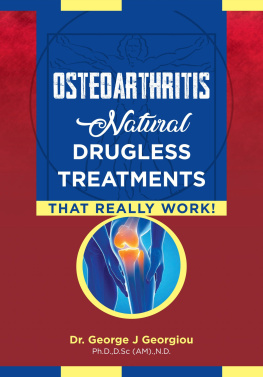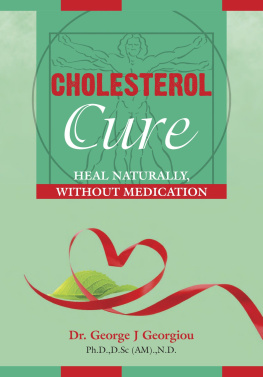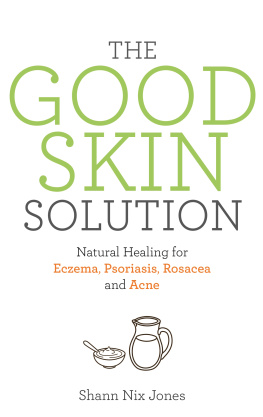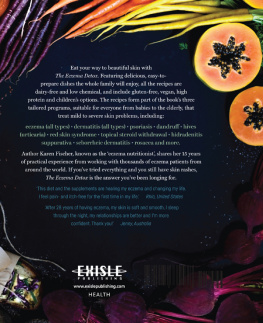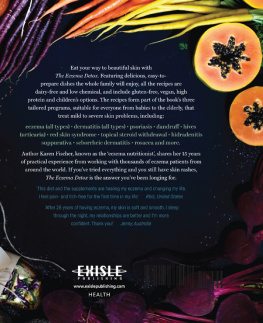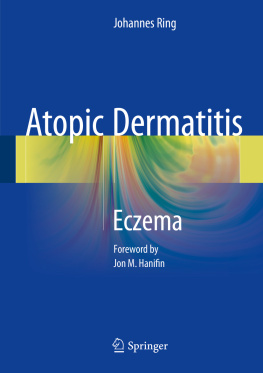Eczema:
Natural Healing
Without Medication
Dr George J Georgiou, Ph.D.,N.D.,D.Sc (AM)
Dedication
First, I would like to bow deeply to the thousands of patients who have helped me understand the complexities of this disease process and who need to take credit for the time spent with them in refining this protocol over many years.
All these patients over the years have been my laboratory for developing many treatment protocols through trial and error, backed by research.
I would also like to thank all the researcher scientists, lecturers and teachers who dedicate their life to helping others, and all the courageous health professionals who go against the grain of the establishment, while thinking outside the box.
A loving hug of gratitude to my wife and 4 children for their support and understanding during my professional endeavours throughout these years they are all blessed.
Finally, I deeply embrace the Divine faith that I have been blessed with, that has helped me believe in the innate healing abilities of the body, through the power of Natural healing, without chemical intervention.
A profound blessing to you all and may your healing journey be fruitful and fulfilling!
Copyright 2018 Dr. George J. Georgiou. All rights reserved. No portion of this book, except for brief review, may be reproduced, stored in a retrieval system, or transmitted in any form or by any meanselectronic, mechanical, photocopying, recording, or otherwisewithout the written permission of the publisher.
For information contact Da Vinci Health Publishing admin@davincipublishing.com.
Published by:
Da Vinci Health Publishing
Panayia Aimatousa 300
Aradippou 7101
Larnaca
Cyprus

MEDICAL DISCLAIMER: The following information is intended for general information purposes only. Individuals should always see their health care provider before administering any suggestions made in this book. Any application of the material set forth in the following pages is at the readers discretion and is his or her sole responsibility.
ISBN - 978-9925-569-23-6
Contents
Chapter 1: The Da Vinci Eczema Protocol
The word eczema comes from the Greek for boiling over. The term was adopted in earlier times from the blistering that occurred in acute hypersensitivity reactions.
Most people think that eczema is simply a skin condition that some people have and live with. However, from all the patients that I have seen with eczema, the condition can also have devastating emotional consequences for some sufferers.
Our skin is what others see, and they often make judgements based upon it.
Ignorance of skin disease is still widespread. Sufferers of eczema and other skin conditions such as psoriasis, often must put up with ill-informed comments and mistaken anxieties that these skin complaints are contagious.
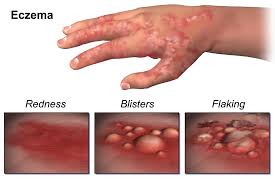
Even family relationships can become strained when a child has eczema. The child's skin feels rough and this can adversely affect the sensation of touch, which is important for bonding with parents. Inflamed skin can be irritating and sore. The application of treatments, which is usually time consuming and often messy, can become a source of conflict. The child can use eczema as a weapon in manipulating his or her parents. A child with eczema may need more attention than a sibling with no such problem, skewing family dynamics.
These are all consequences that families with a child with eczema face every day.
People with eczema look and feel different they seem to stand out from the crowd for the wrong reasons. This is an uncomfortable feeling for most people. At school, bullying and teasing can lead to shyness, withdrawal, under performance or a refusal to attend classes.
In older age groups, when physical appearance and attractiveness become increasingly important, chronically inflamed, cracked, dry skin is seen as unattractive and can cause much anxiety or depression. Sleeplessness from scratching leads to fatigue, which can increase psychological distress.
A sensitive and informed approach to eczema by relatives and friends can be extremely helpful. Accepting the person rather than the illness gets around a lot of the difficulty.
What is Eczema?
Eczema, or Atopic Dermatitis (AD) is the most common inflammatory skin disease affecting up to 17% of children and about 6% of adults in the US, making up more than 30 million people in the population (Laughter et al, 2000; Odhiambo et al, 2009). In some countries, more than 20% of children are affected.
Its cardinal features include dry, eczematous skin lesions, a relapsing and often chronic course and an intense, intractable pruritus (itching). Many of these features have been attributed in part to an acquired and/or genetic epidermal barrier defect.
Disturbance of the epithelial barrier is now recognized as a common feature in many inflammatory diseases including inflammatory bowel disease, celiac disease, sinusitis, food allergy, asthma, as well as AD.
A defect in the barrier, related to claudin proteins that are deficient in AD, has been argued to favour the penetration of microbes, allergens/antigens and irritants into the dermis, and possibly contribute to a weakened immune response observed in early AD lesions.
If your skin is frequently itchy with thick red, scaly patches or small bumps that may leak fluid and crust over when scratched, it's likely eczema, not just dry skin.
In rare cases, atopic dermatitis can first appear during puberty or adulthood. It affects males and females equally.
Types of Eczema
Here are the most common types of eczema:
Atopic Dermatitis
The term atopic means there is a hereditary tendency to develop eczema, asthma and/or hay fever. This is the most common form of eczema, affecting an estimated 9 to 30 percent of the U.S. population.
Atopic dermatitis usually starts during childhood, typically in the first 6 months of life. Its symptoms include dry, scaly skin, redness, itching, a rash on the cheeks, arms and legs, and cracks behind the ears.
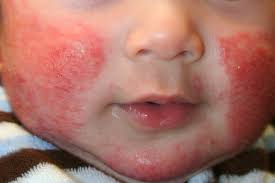
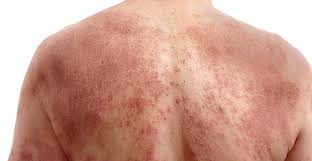
Contact Dermatitis
This is a type of eczema that occurs when your skin comes into contact with irritants or allergens (called triggers), resulting in redness, inflammation, itchiness and/or pain. There are two kinds of contact dermatitis: irritant and allergic.
The common triggers of irritant contact dermatitis are solvents, detergents, paint, pesticides, bleach and fumes. On the other hand, allergic dermatitis (also called allergic eczema) can be triggered by topical antibiotics, adhesives, fabrics and poison ivy.
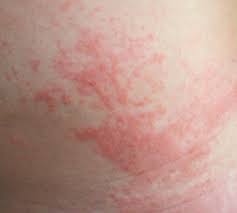
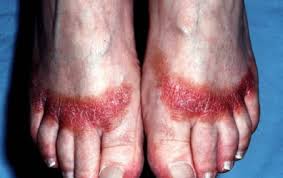
Dyshidrotic Eczema
When you have small, itchy blisters on the edges of your fingers, toes, palms and soles of the feet, you may have dyshidrotic eczema. It is characterized by vesicles, which are small fluid-filled blisters. The other symptoms are itching, redness, flaking, pain and cracked or scaly skin.
Next page
